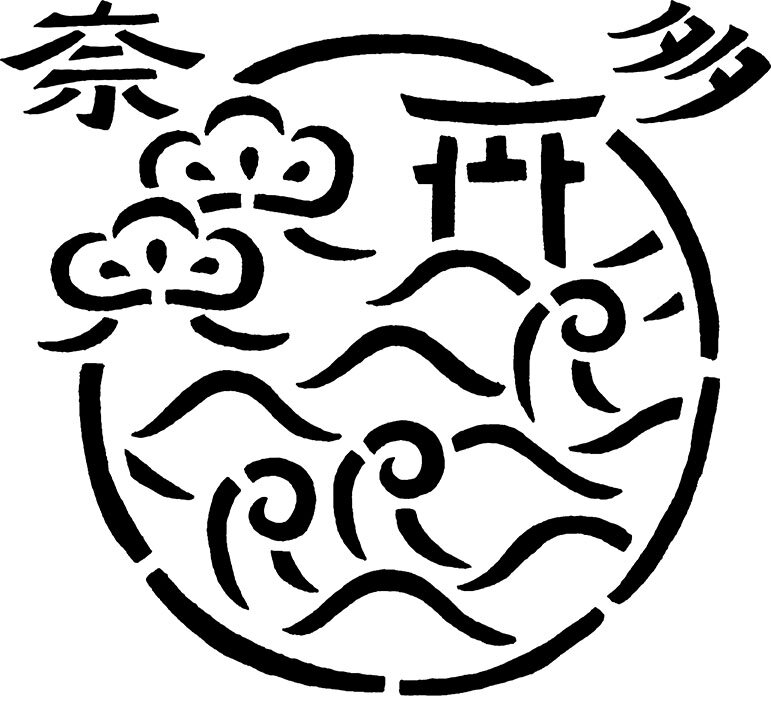
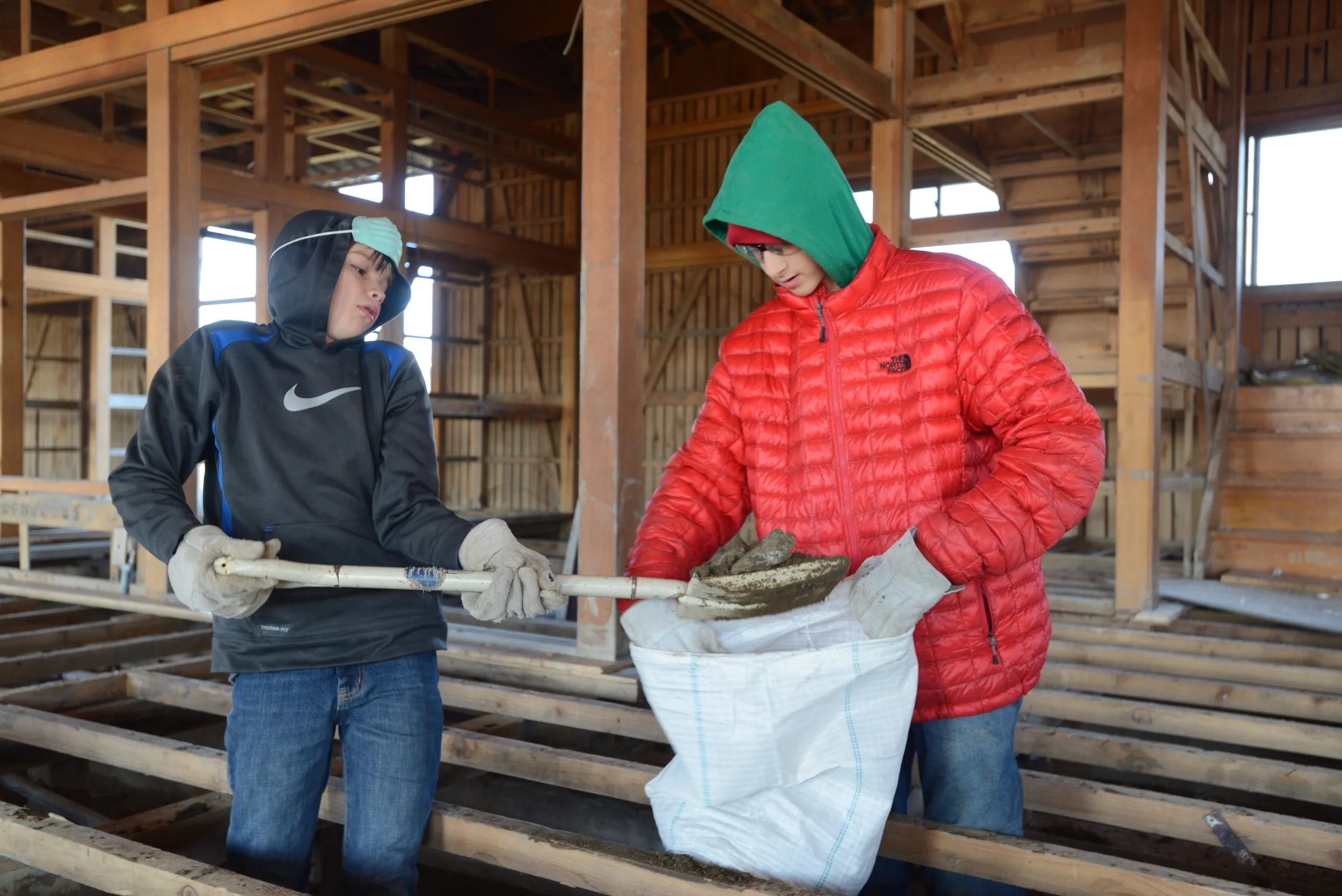
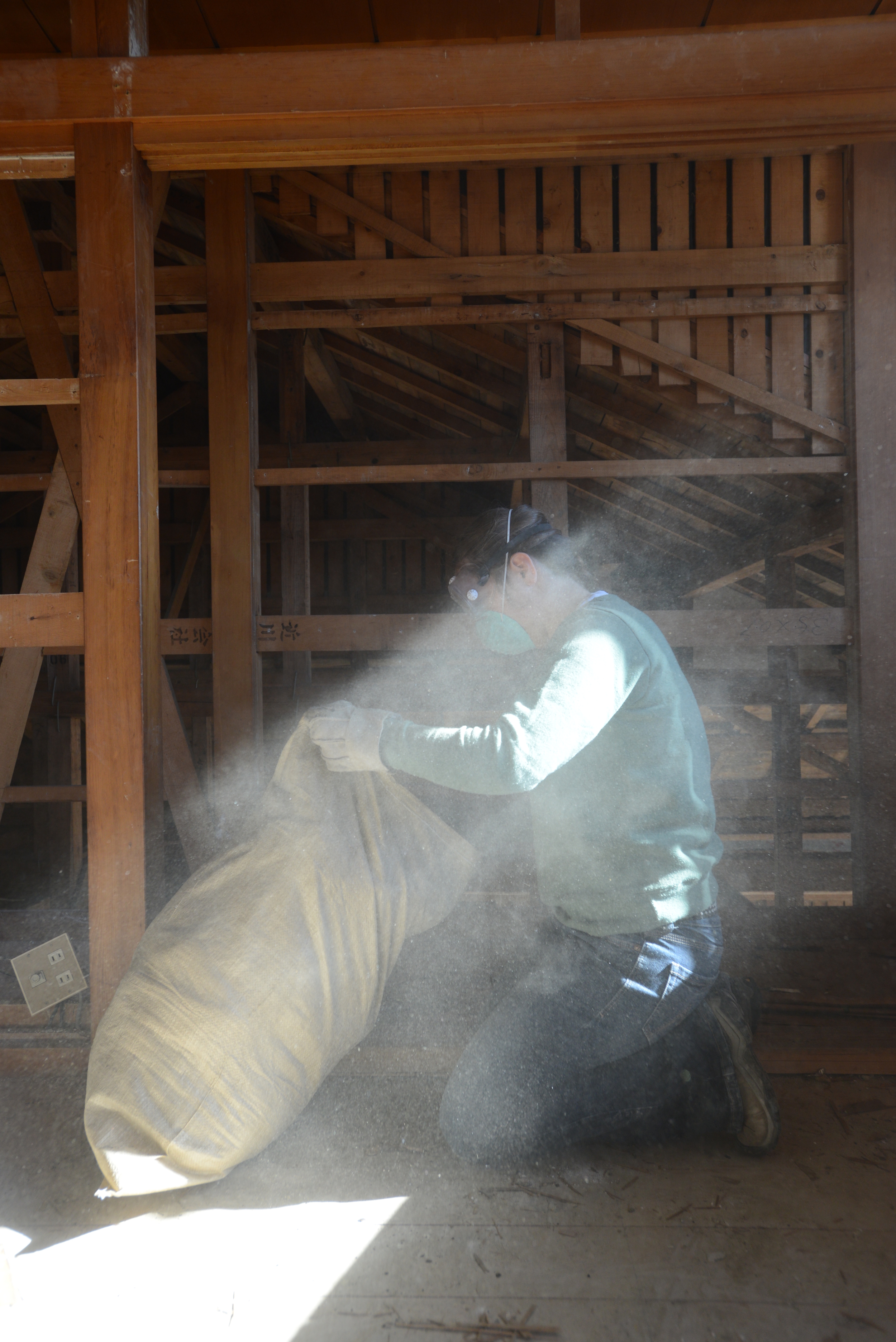
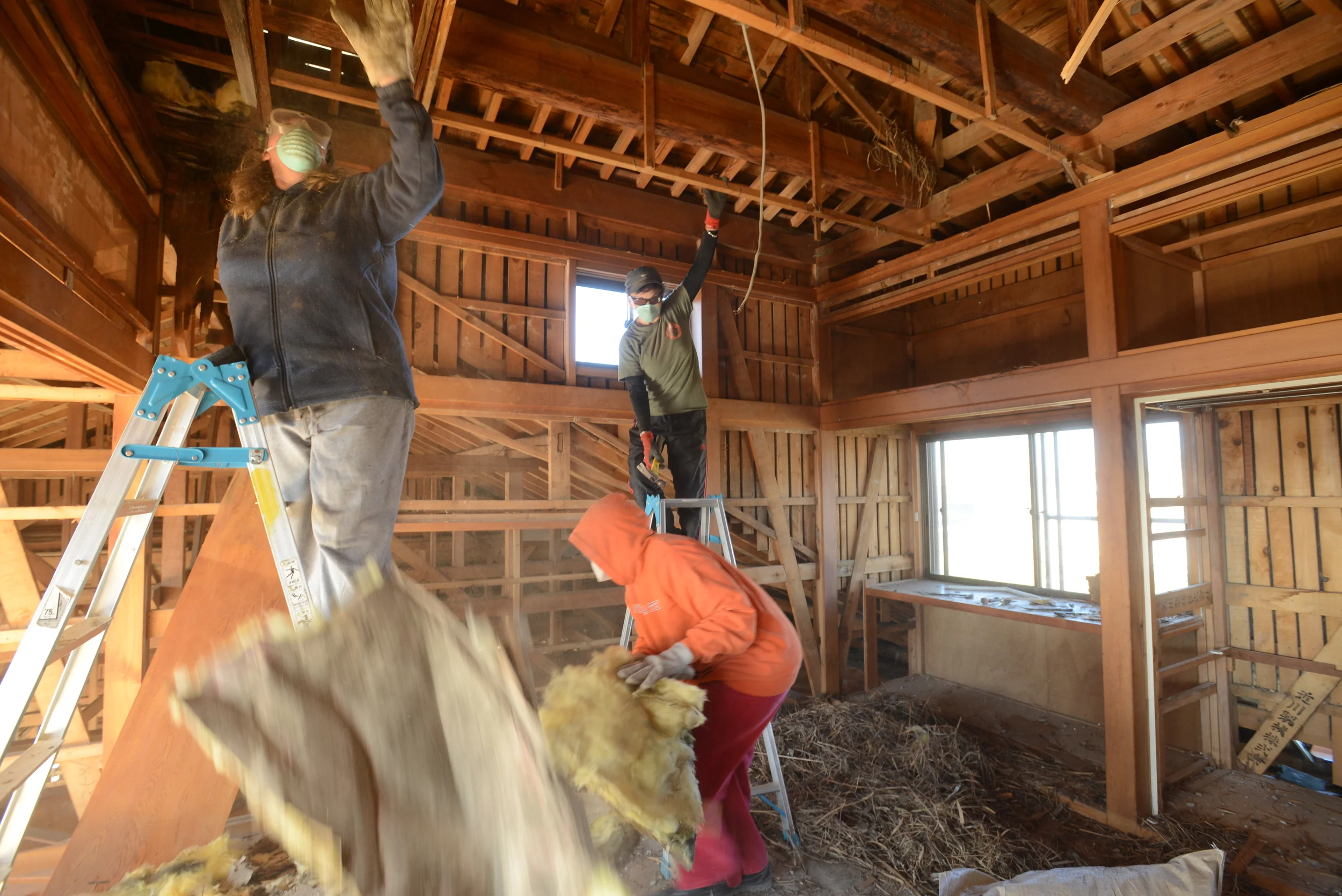
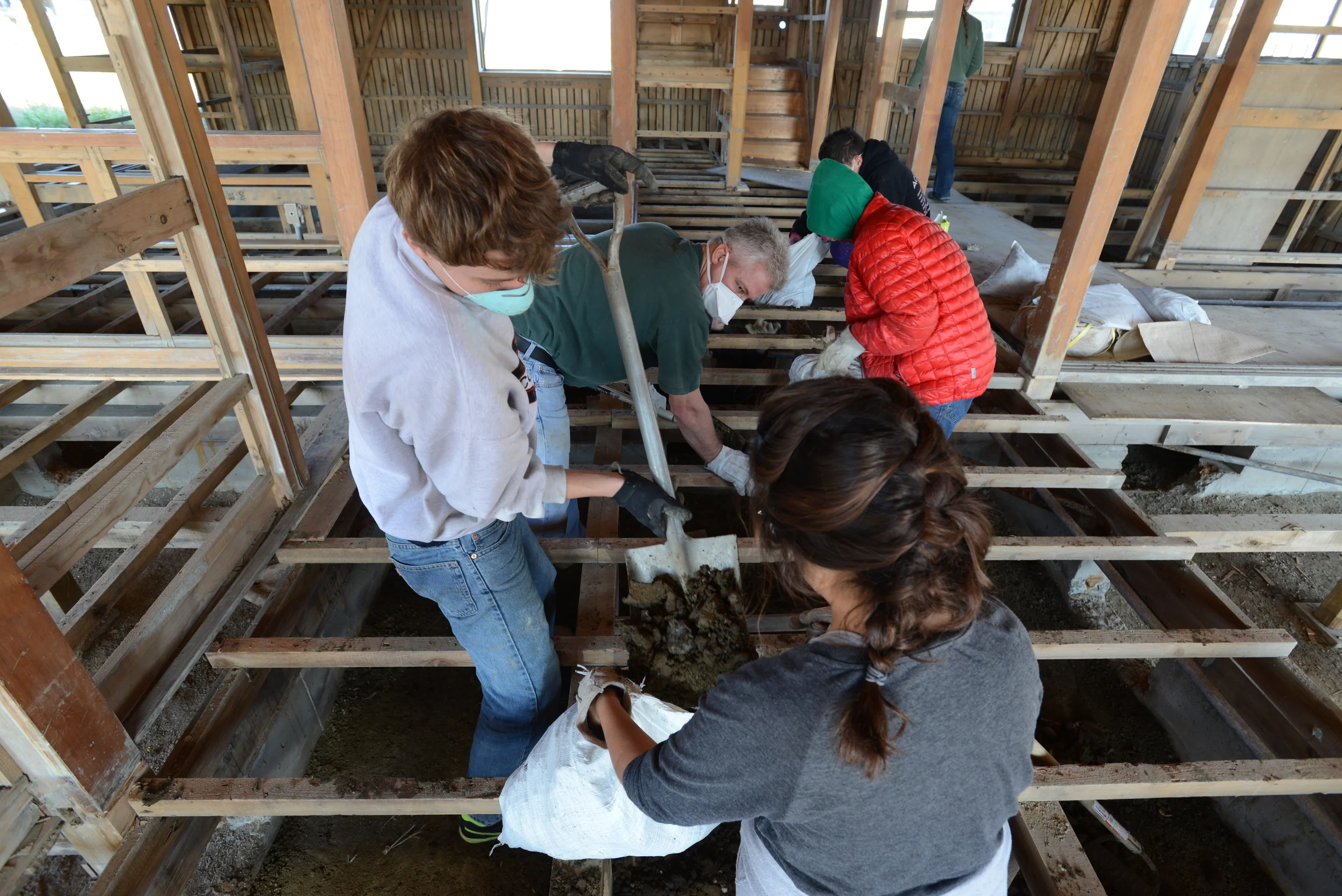
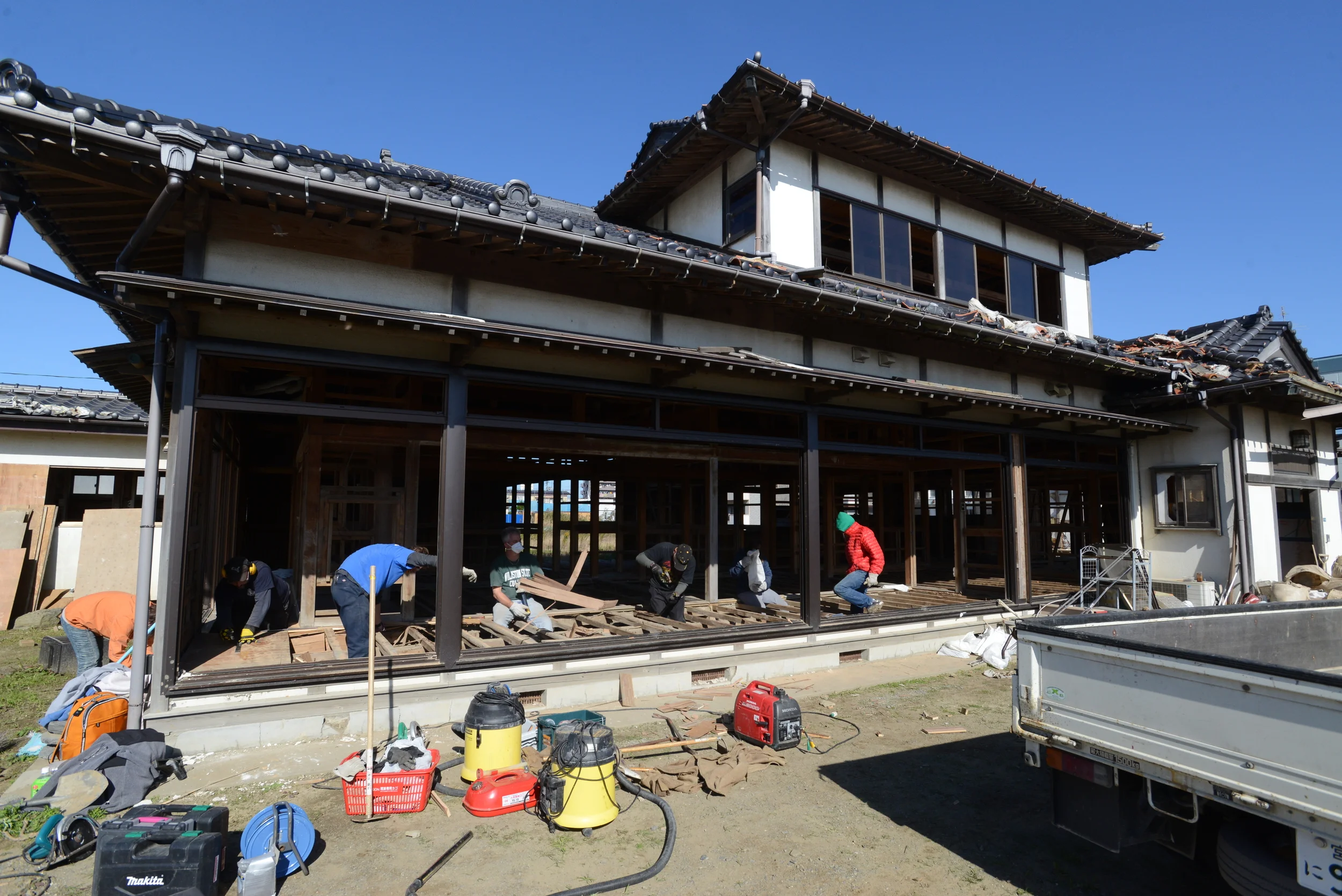
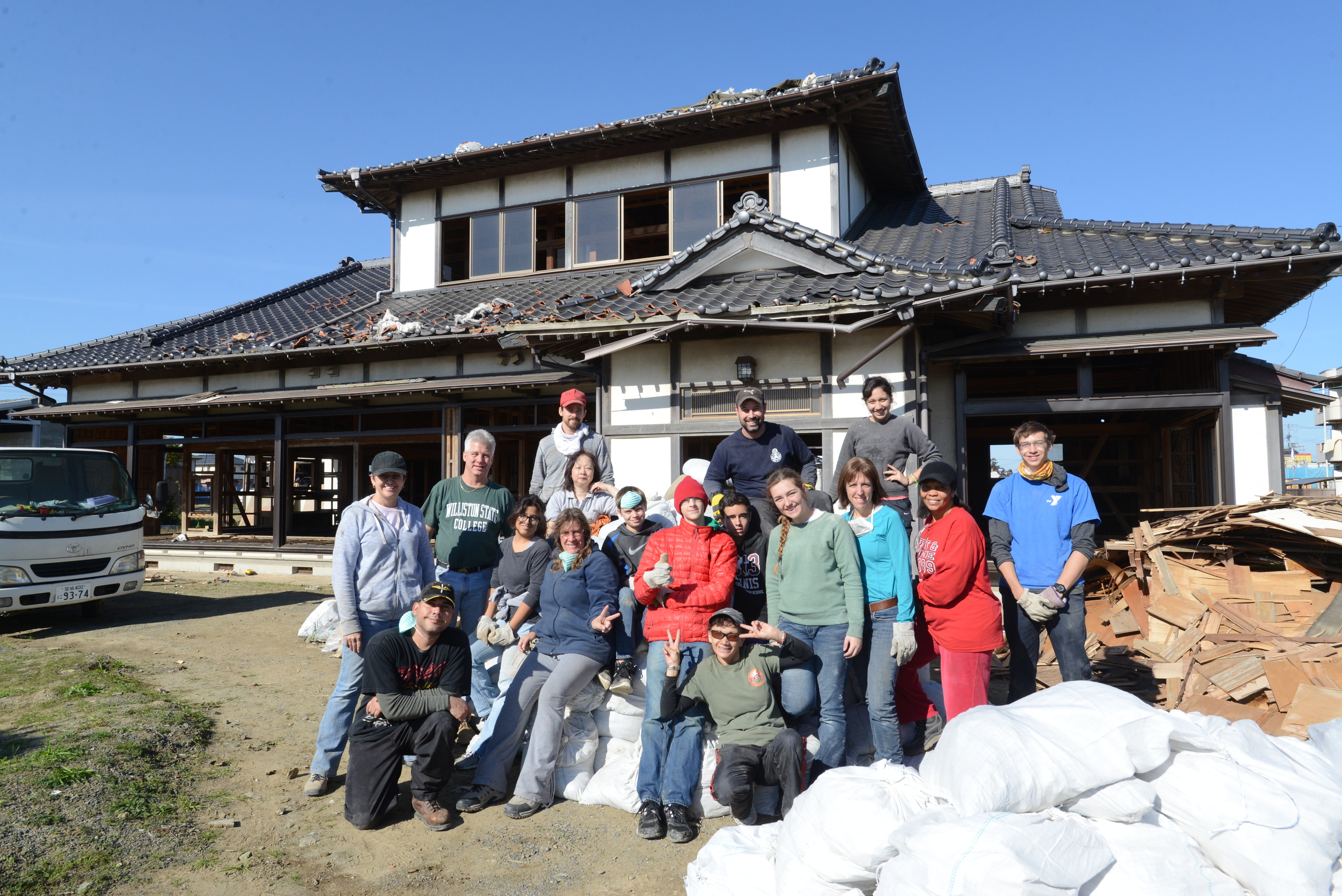
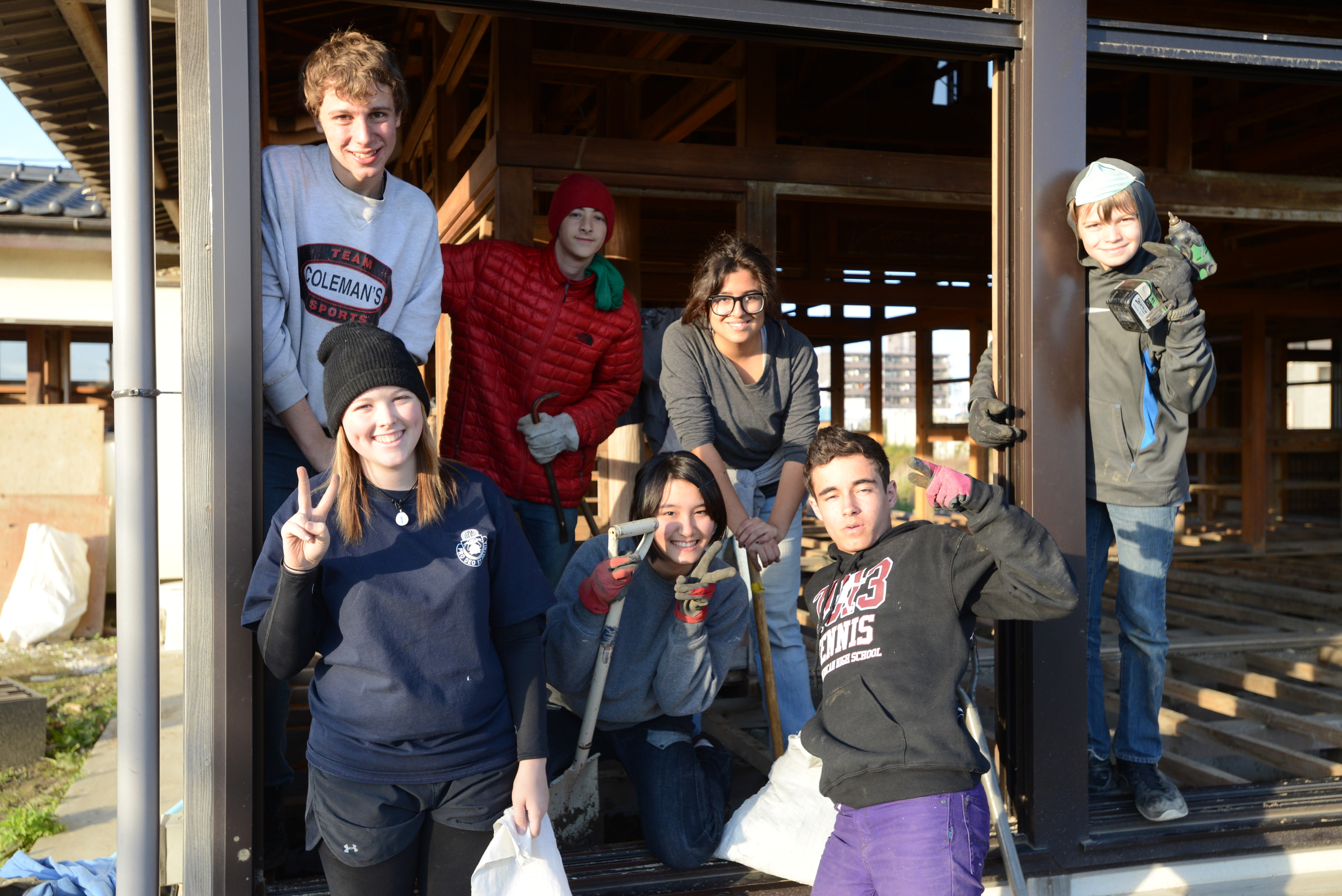
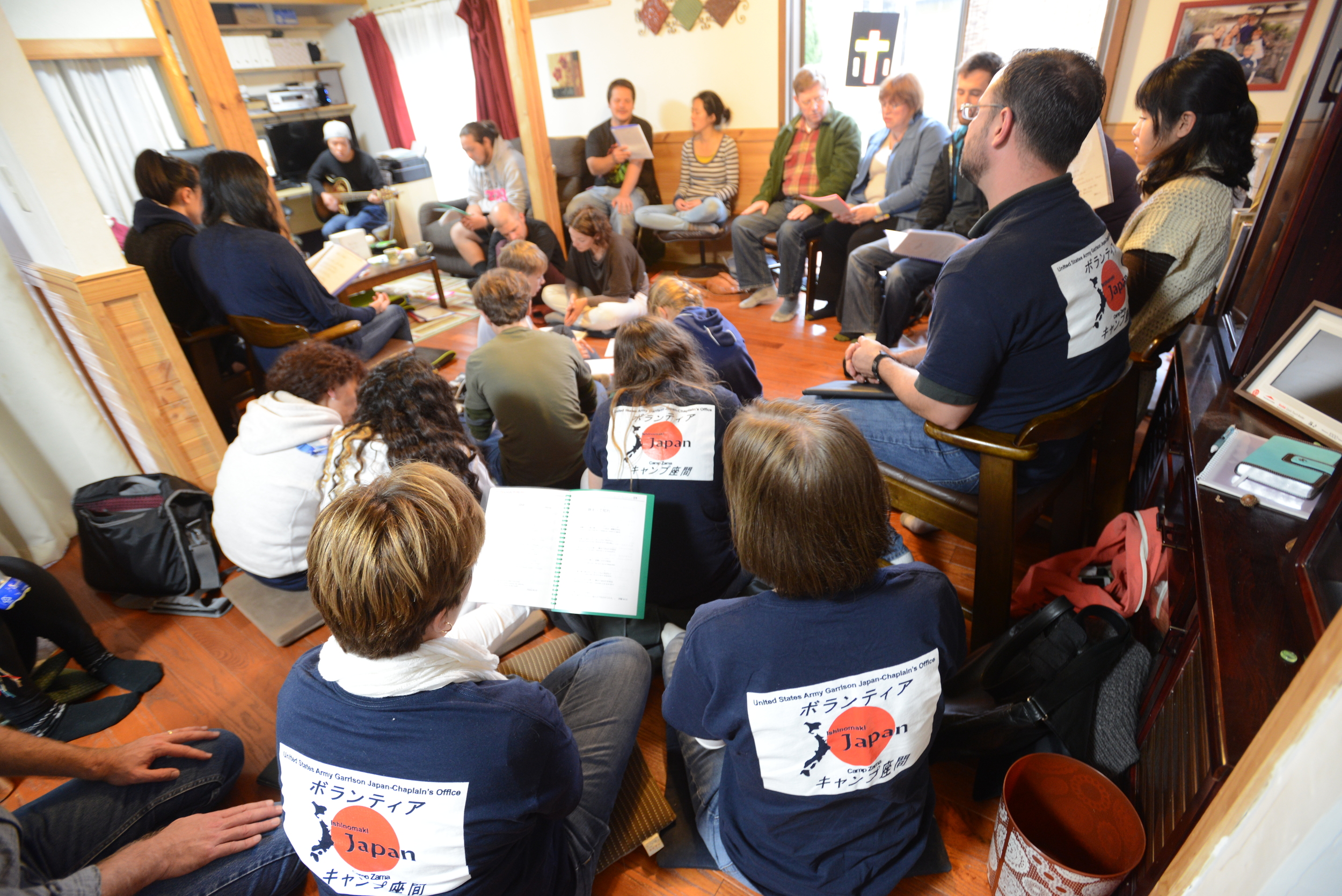
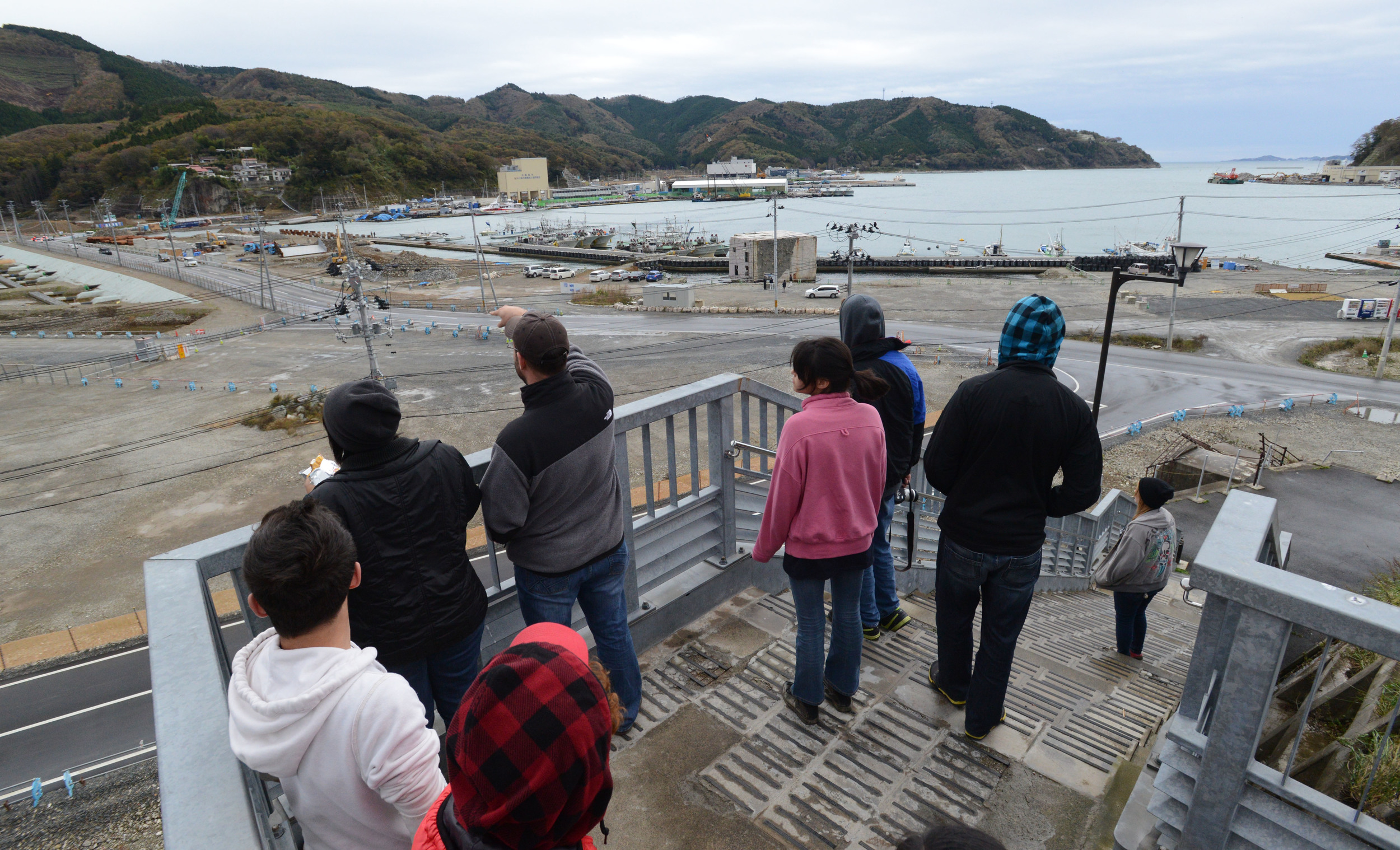
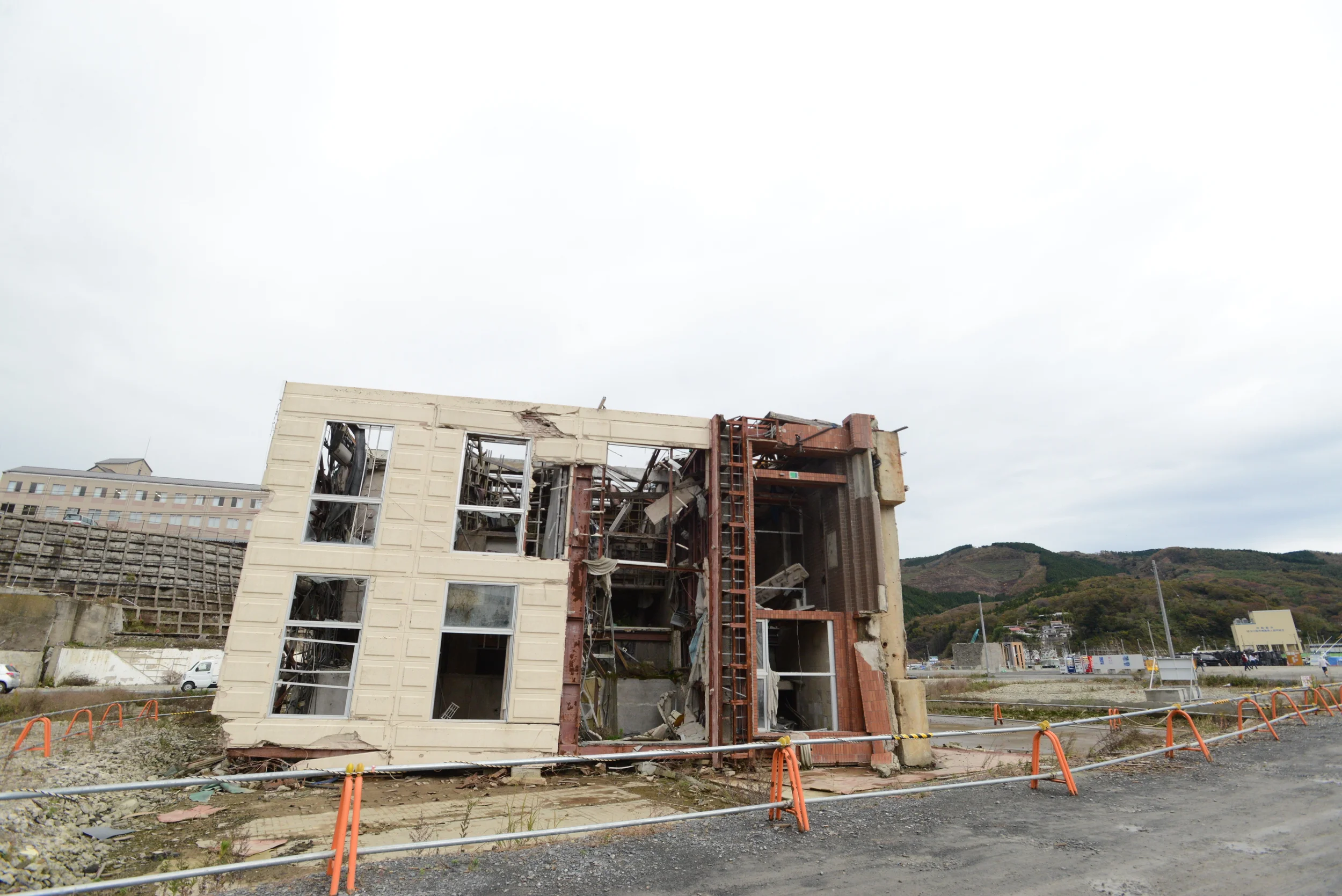
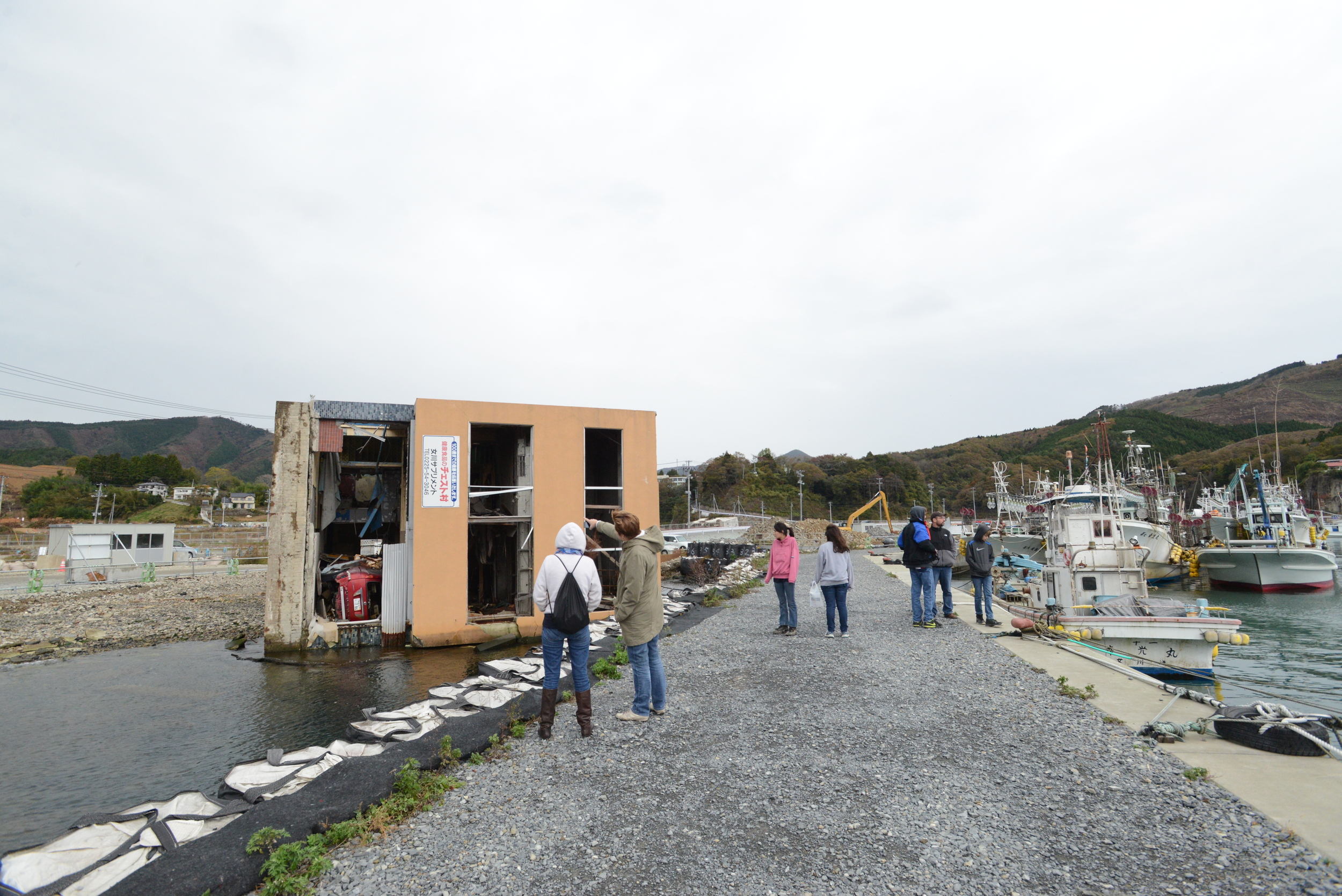
Long road to recovery
Photos and story by Tetsuo Nakahara - Published on Stripes Japan
There was a watermark 9 feet-high on the living room wall of Ishinomaki Christian Center in Ishinomaki City where a U.S. Army Garrison team of volunteers was staying. It was a silent reminder of the Great East Japan Earthquake and tsunami that hit this area on March 11, 2011.
After two years and eight months, this city in Miyagi Prefecture is slowly recovering, but there is still plenty of help needed to restore it to its former state. Nearly 70 percent of Ishinomaki’s 163,000 inhabitants were directly affected by the disaster – 4,000 dead or missing and 15,377 still living in temporary housing. About 78,000 buildings were damaged – 44,000 of which were completely destroyed, according to city data.
I join the team of 20 volunteers to chronicle its Nov. 7-11 mission. It consisted of a soldier, civilians and teens that drove 7 hours to Ishinomaki from Camp Zama to help clean one of the tsunami-ravished houses. They gathered at the Christian center, which is run by a local volunteer group, to coordinate the task at hand.
U.S. Army Garrison Chaplains office sends a volunteer team to Ishinomaki every three months. This was the seventh. So far it has sent more than 75 volunteers to work at 15 different sites, according to James Corneliussen, Zama’s religious education director who coordinated the tour.
“The main purpose of the volunteer trip is to help the residents of Ishinomaki restore buildings and lives by providing love and support from the USAGJ chapel communities,” said Corneliussen. “I also think it’s very important for all of the team members to share the story of The Great East Japan Earthquake and its aftermath wherever they go so that lives lost or changed forever won’t be forgotten.”
The team worked on a 30-year-old two-story house that needed extensive cleaning before renovation. The labor-intensive work included removing damaged flooring, ceilings and walls, and clearing rubble and dirt.
“I appreciate that people from U.S. military bases are still coming here to volunteer and work,” said Motokazu Arakawa, the house’s owner. He publishes a free English-language magazine, Rolling Press, to inform people about post-tsunami Ishinomaki. “The U.S. military gave us a huge support after the disaster. It was not only military organization but also many individual Americans, and I am truly grateful for that.”
On the third day, the team took a tour to Onagawa Town about a 40-minute drive north from Ishinomaki. It is one of the most devastated areas. Onagawa used to be a famed fishing town known for its beauty, but a 49-foot-high tsunami swept three-quarters of mile inland following the quake.
Now the area appears as a large vacant expanse where two large buildings remain on their sides, toppled over by the tsunami. It is hard to even imagine that a town once existed there. We were speechless. We were seeing with our own eyes how badly the tsunami has affected people’s lives in the area.
Here is what some of the volunteers took away from the experience.
Staff Sgt. Geiner L. Santana-Diaz; Beth van Kan; Sonya Y. Auston; Joshua McCluskey, 15; and Kyla Troxel, 15, were among 20 volunteers from U.S. Army Garrison Japan on Camp Zama who traveled to Ishinomaki City Nov. 7-11 to help with ongoing cleanup needed after the 2011 Great East Japan Earthquake and tsunami. While there, they shared what they were taking away from the experience with Stripes Okinawa.
Q: Why did you join these relief efforts in Ishinomaki City?
Santana-Diaz: I got here (Japan) in 2012 and I heard stories about the tsunami and how U.S. Army Aviation helped out. I have participated in volunteer work in Puerto Rico because we get many hurricanes there and houses are damaged by that. I put myself into the shoes of those who were affected by the disaster. … It’s got to be really terrible. I just want to help out anybody I can a little.
van Kan: From the moment I heard about the trips from Camp Zama to Ishinomki, and that was almost as soon as I arrived in September 2011, (I decided to go). I met people who had gone on this trip. They shared their stories (and) pictures and made people realize that there was work that needed to be done here. And they shared how fulfilling it was to come and do that. So that was something that I wanted to be a part of.
Auston: My motivation is people. When they are in need, when tragedy happens I always want to know what I can do for you. Whether it’s just to sit and listen … whether it’s working, whatever it is. I have a heart for people. I was in the States when the disaster happen and I remember listening to some of the Americans and some of the things that they were saying and probably lacking little bit of compassion, but now to actually be here and see it – it is beyond the coverage that was on TV.
McCluskey: I wanted to help the Japanese and help get their lives back up. This is my third volunteer trip here. I came twice last year. I wanted to keep helping because they needed so much help and also it’s cool to see how (they are) progressing and getting better. I met a lot good people like Jordan here at (Ishinomaki Christian Center). I see that if they can do that, why can’t I help out some way, too?
Troxel: I just really like helping out. It is just fun.
Q: How would you assess the area today?
Santana-Diaz: There are lots of empty lots but it seems some people have beautiful new houses. Looking around, everything is brand new. In two and half years, Ishinomaki has progressed a lot.
van Kan: I don’t know what to compare it to before today. I remember seeing a film when it happened and the devastation it caused. Coming here today, it’s cleaned up; near the bay area you can tell there used to be homes. People lost their lives and it’s possible people are forgetting about the area when there are still people here in need.
Auston: Just looking at Japan in general, there is not a lot of space anywhere. But looking at this area, there are so many vacant and spaces. I just can’t even imagine it when I hear somebody (talking about) the houses that used to be here. So, the devastation was just enormous. You can still see some impact today.
McCluskey: It got lot better. A lot of the houses are rebuilt, and the seawalls are mostly up.
Troxel: This is my second trip and it was June when I joined for the first time. I can definitely see that there is more that has been fixed and there is a lot less piled up cars.
Q: What can people do to help those in the area?
Santana-Diaz: First of all, they can do volunteer work like we do when they have spare time. They could make donations and provide building materials or food or clothing. Those are some little ways to help out here.
van Kan: Come here for vacation or sightseeing and to help put that needed money into restaurants and small businesses if you have the opportunity. It’s a beautiful drive out, six and half hours. … That would be one way to give back as well as the physical part of coming out here and hooking up with maybe the missionaries here or another group.
Auston: I think one of the main things to do is not come with your own assumptions. Really ask, “what can we do? What would you like us to do?” And giving monetary to different organizations is always a great help. And maybe just ask people, “How are you? What is your story?” I think that makes big differences because anytime you’ve gone thorough something real tragic it’s good to talk it out after you come through the tragedy. It’s the rebuilding of lives.
McCluskey: It would help a lot if more people just came and helped out however they are asked to help. And if you want to help volunteers, you can bring (us) sodas that (we) can’t find in Japan, Mountain Dew and Dr. Pepper (laugh).
Troxel: They can obviously just come to this trip and help out. And if they can’t physically come here they can just send maybe items that they know we can possibly use.
Q: What did you learn from this trip?
Santana-Diaz: Teamwork. I was very surprised with the group I was with because there were a lot young kids. Once we got down to work, they were working with teamwork. So, it gave me a look on when I was young and helped my grandfather with construction. Everybody did a great job and there were no injuries, so that was good.
van Kan: People are resilient. (People) have gone through the tragedy and come back and are rebuilding their homes or staying in the places near their homes so they can rebuild and begin their business again.
Auston: I think the biggest thing I learned is to be thankful for everyday and always have a great compassion for people who have gone through tragedy just because it never happens to me, it doesn’t mean it won’t, it will, just a matter of time. And I will need some people to come and say “How can we help? I am so sorry.”
McCluskey: I learned that sometimes very bad things can happen, but when those bad things happen there is always hope.
Troxel: Obviously there are people who have had it worse than I do, and I need to be grateful for what I have and not take things for granted. But also I kind of learned that not everybody is going to be grateful about my work even though I am helping them. But that’s normal. It’s kind of the pride thing, I guess. … But normally, everybody is really happy and grateful for the help.
Q: What do you like about Ishinomaki?
Santana-Diaz: There is a manga museum that I would love to go to but I don’t think it’s going to happen this time. I am a big fan of manga. I love Japanese comic books and anime. I will go there next time when I come back here.
van Kan: Being close to the sea is beautiful. Just out of Sendai, we already met a gentleman that thanked us for just coming this way. So, the just kindness of people … it’s very humbling when somebody thinks you. It was awkward almost because you are here because you want to be.
Auston: It gives me a chance to actually have eye contact and listen. Even sometimes to give a hug or just to say I am sorry for what you lost. Being in the situation in real time, it changes your life. It’s different from casually sitting on a sofa watching it on TV saying, “Wow!” You know, you get to see these people.
McCluskey: People are very nice here. … They are helping out everyone, even volunteering for the volunteer people. There is a rock wall center in Ishinomaki. It’s very hard, and if you are experienced rock climber you would like that.
Troxel: I like having the feeling we are all like a family. Near the Tokyo area, everybody has their own individual life and are not really communicating that much, but here, even though they are strangers they still feel like a family. It gets me used to a bunch of different personalities because there are a lot of different personalities up here. It also lets me brush up on my Japanese skills.
- See more at: http://japan.stripes.com/news/long-road-recovery#sthash.DItSmSsw.dpuf
